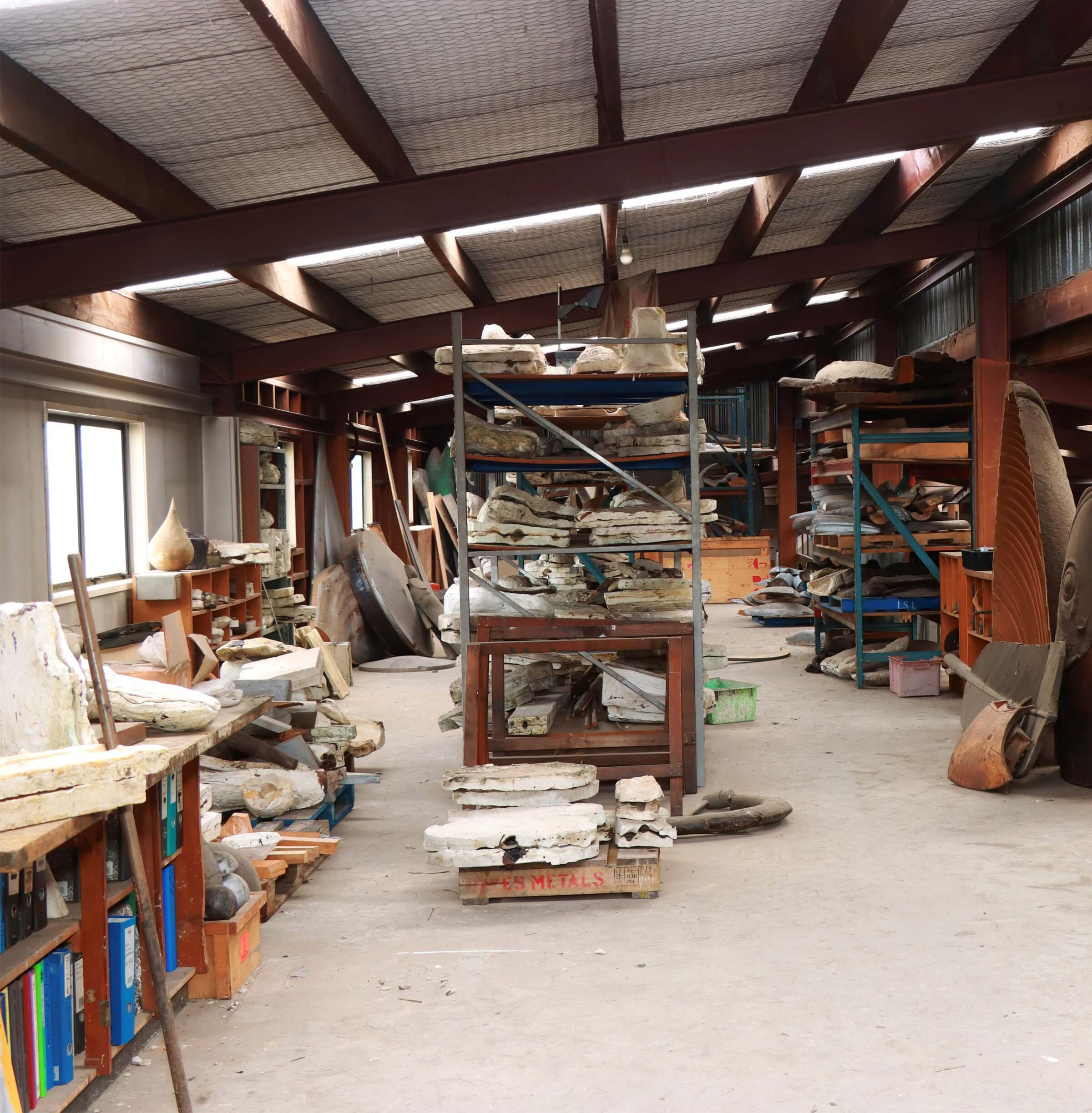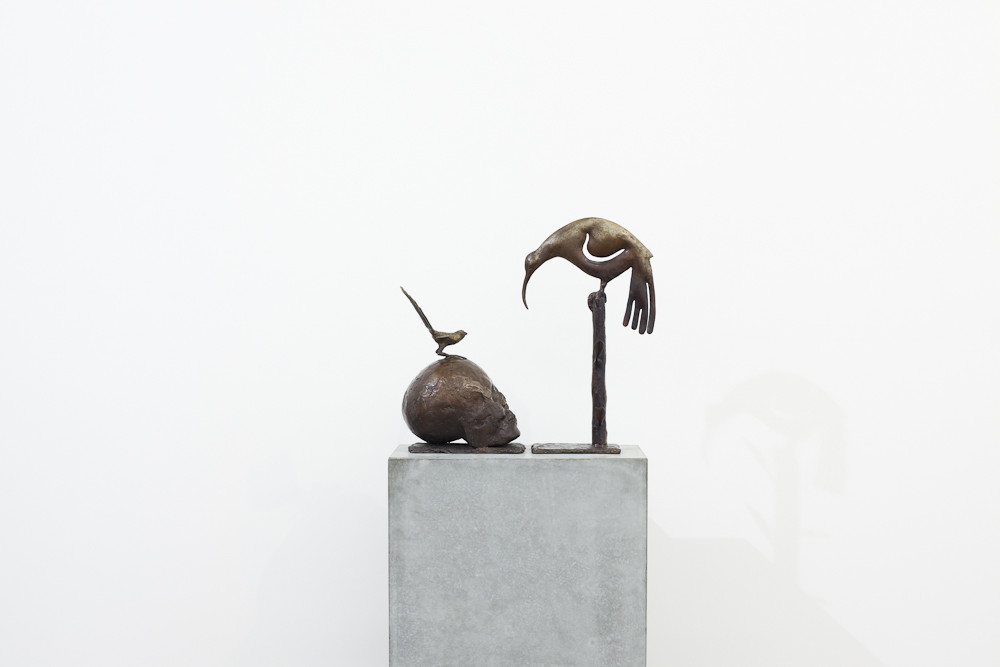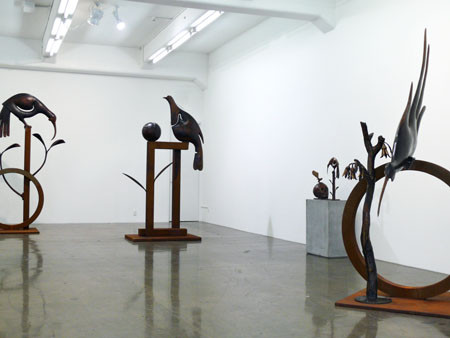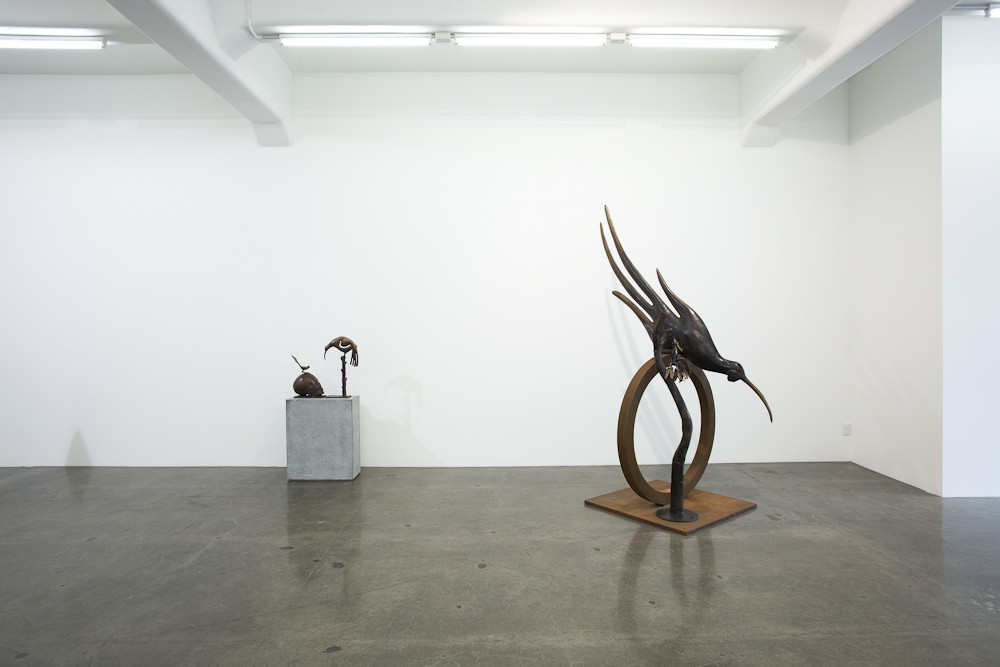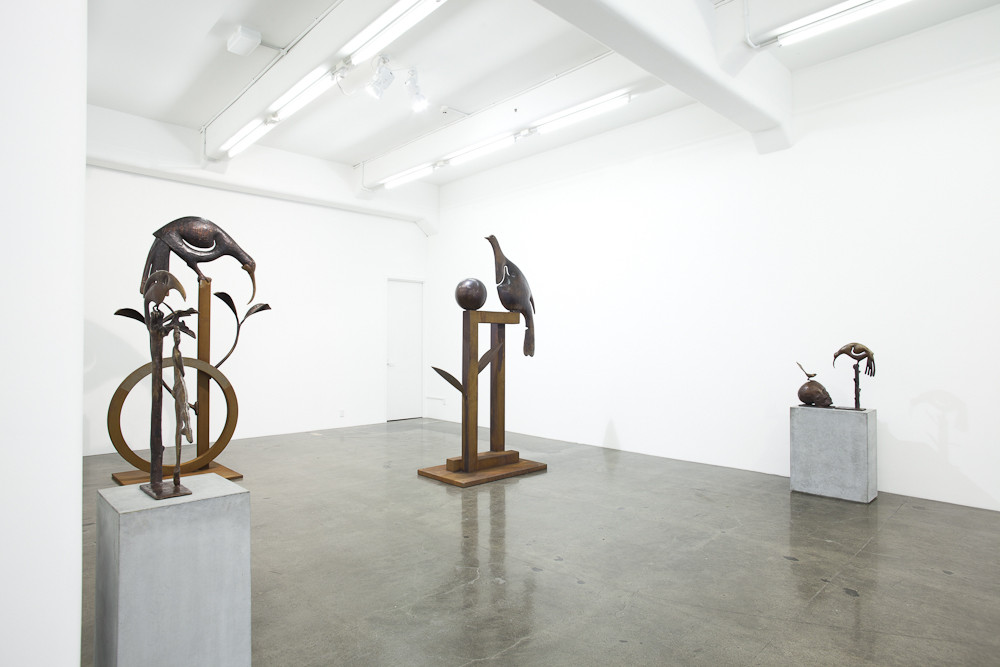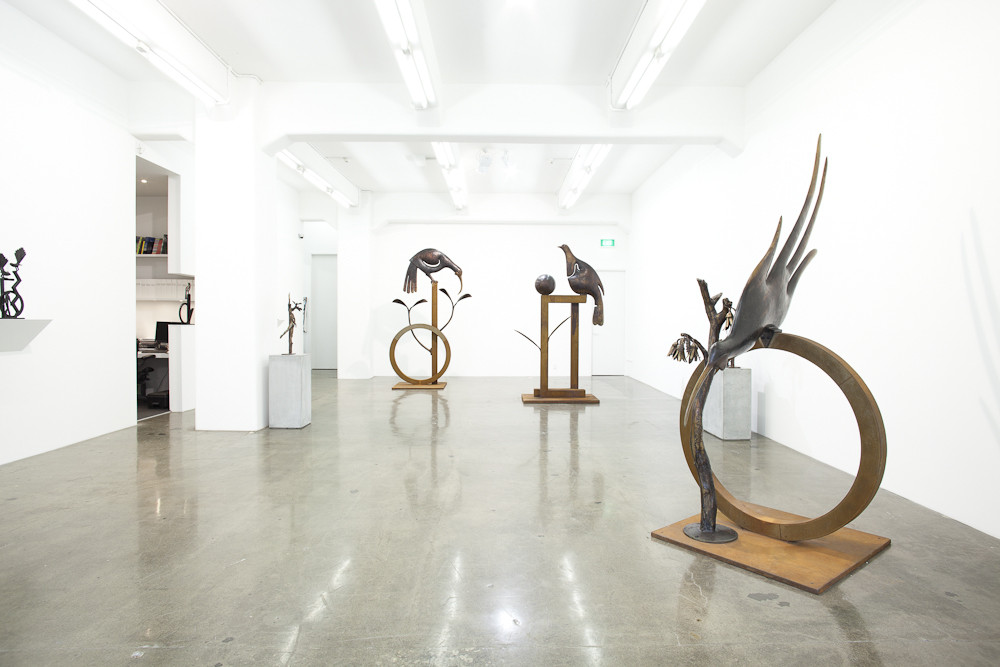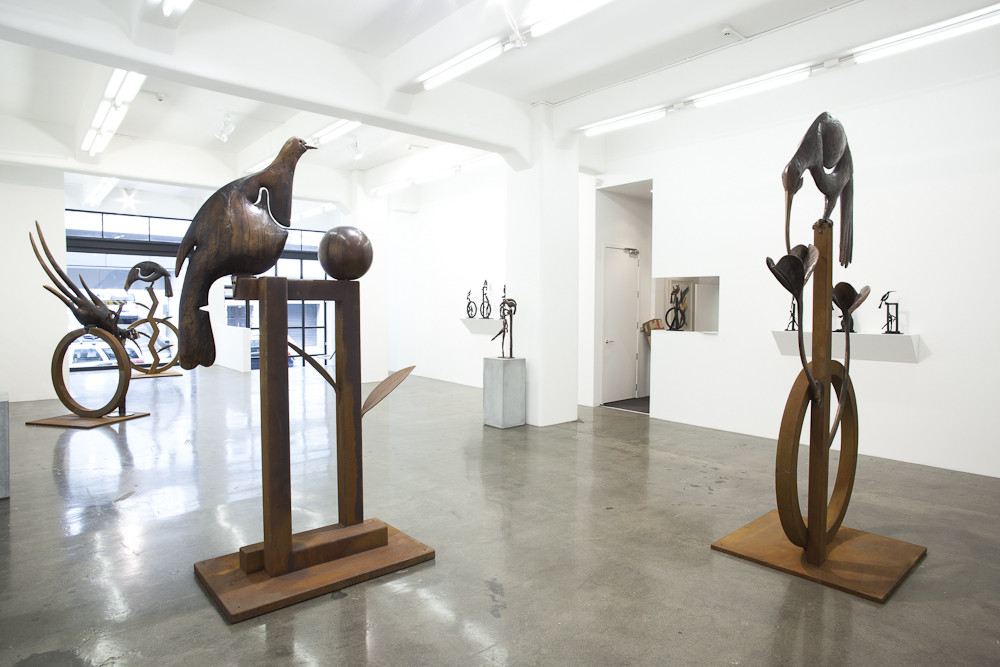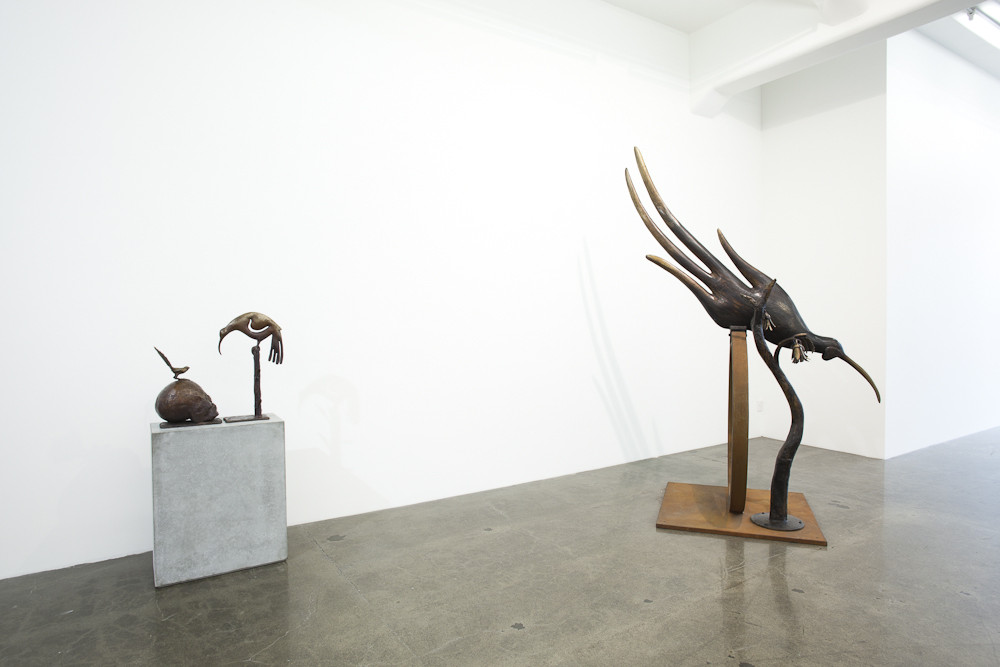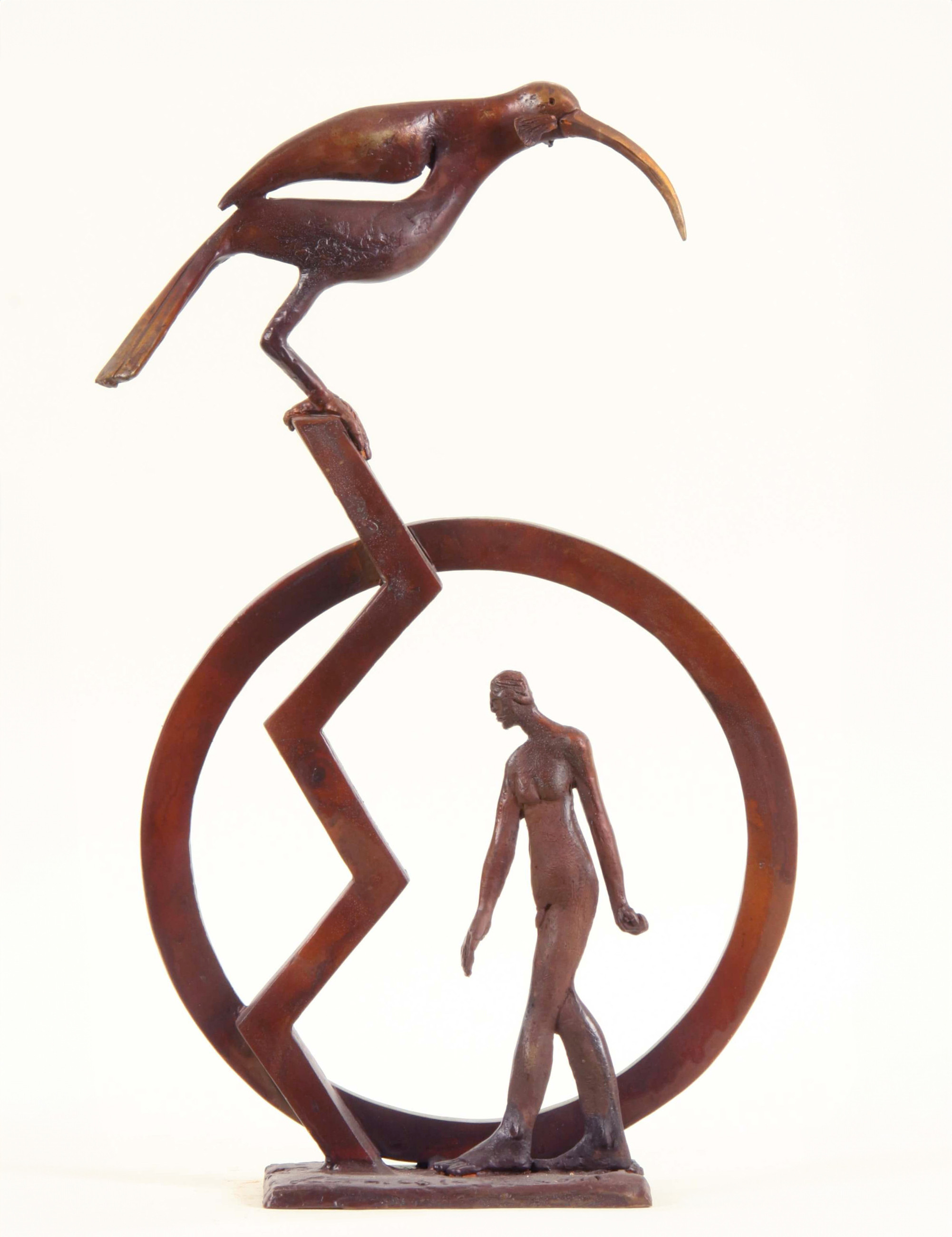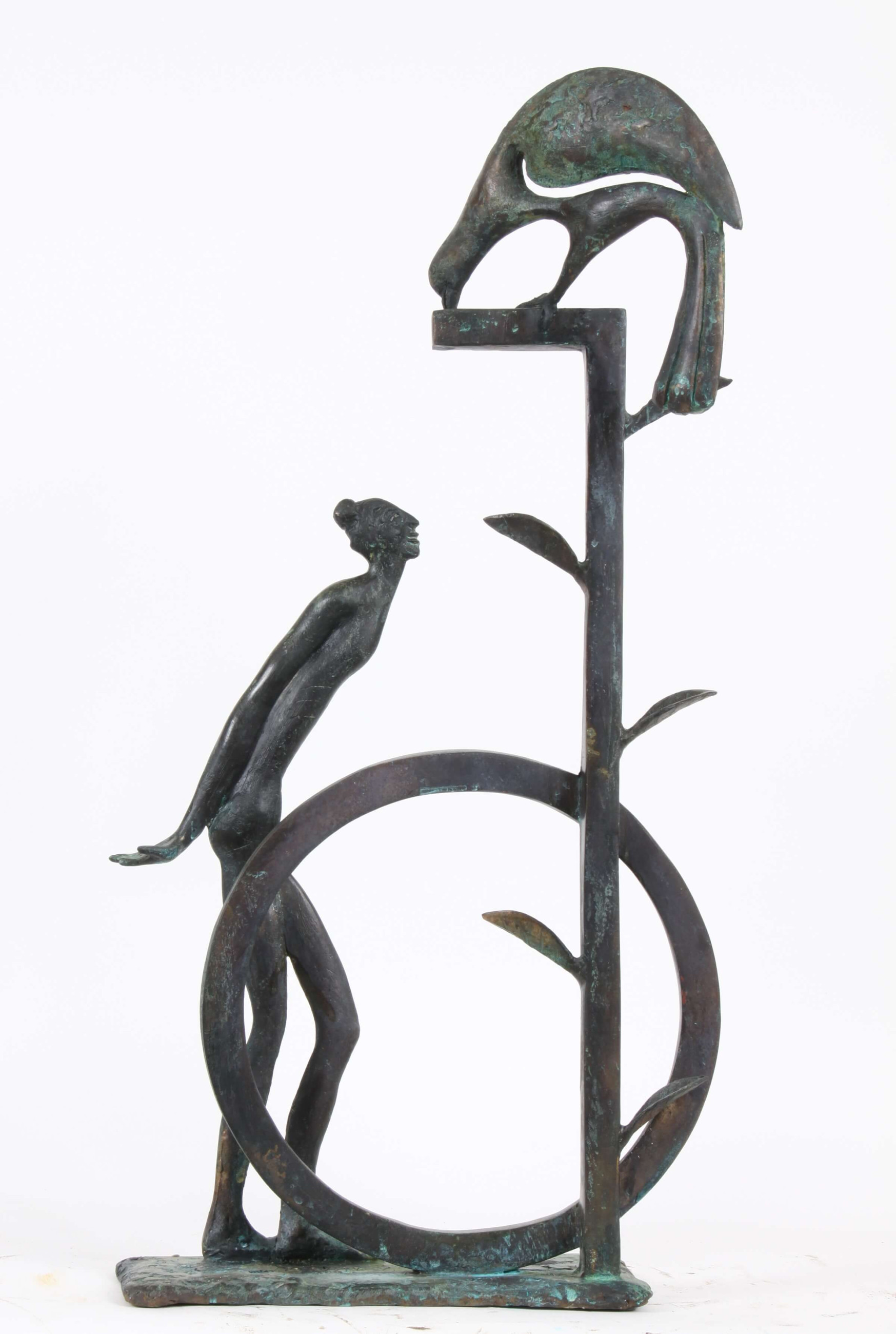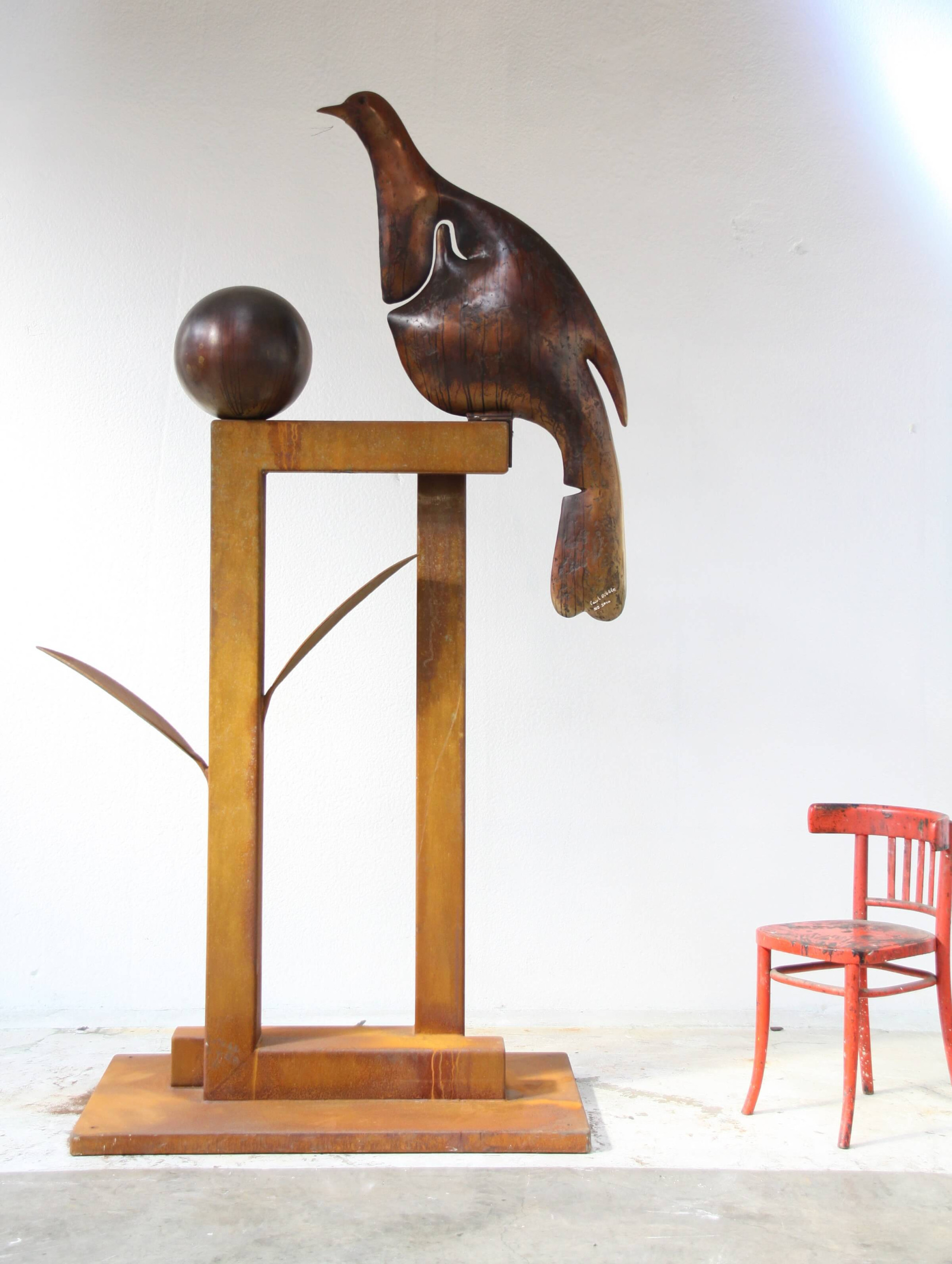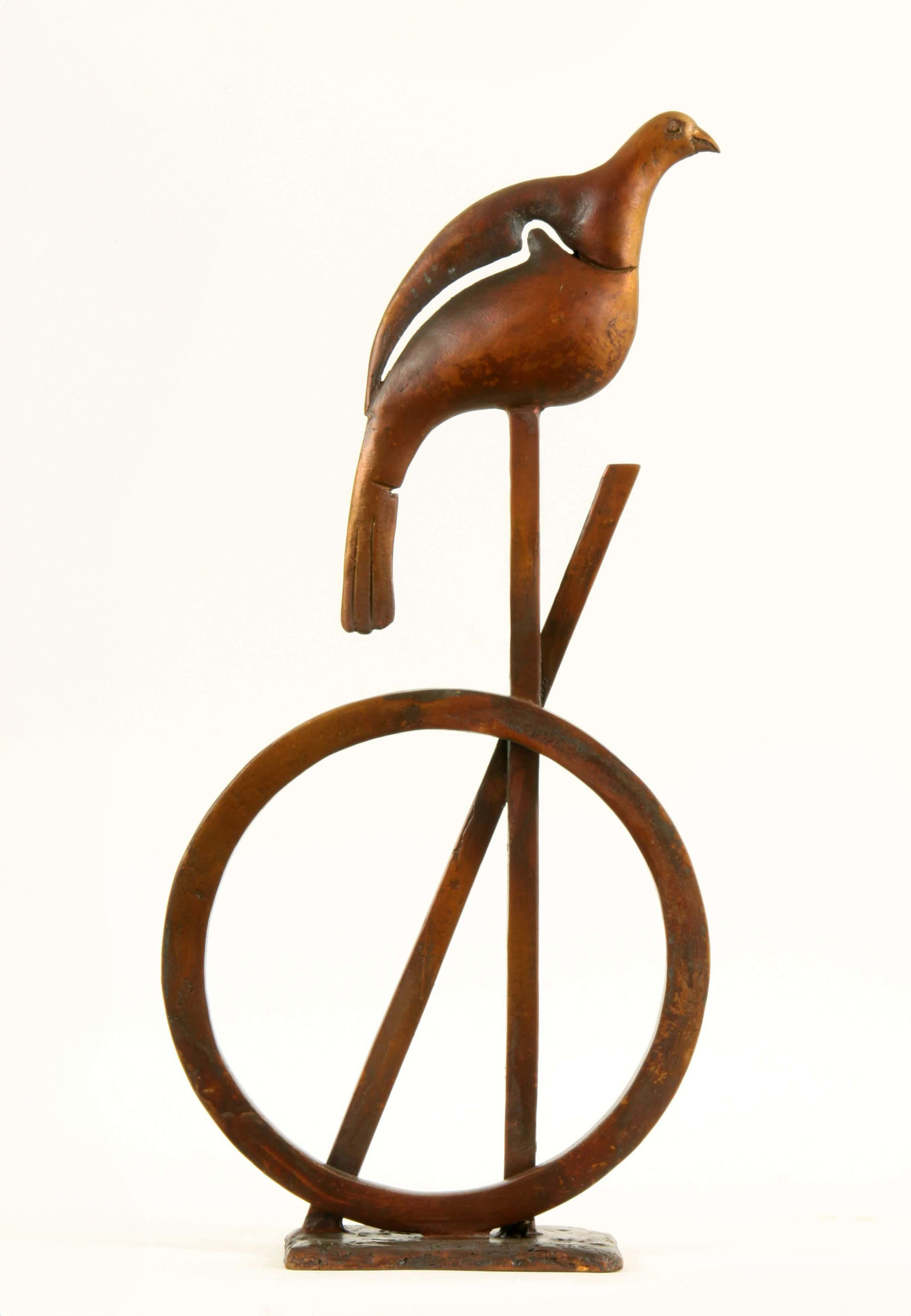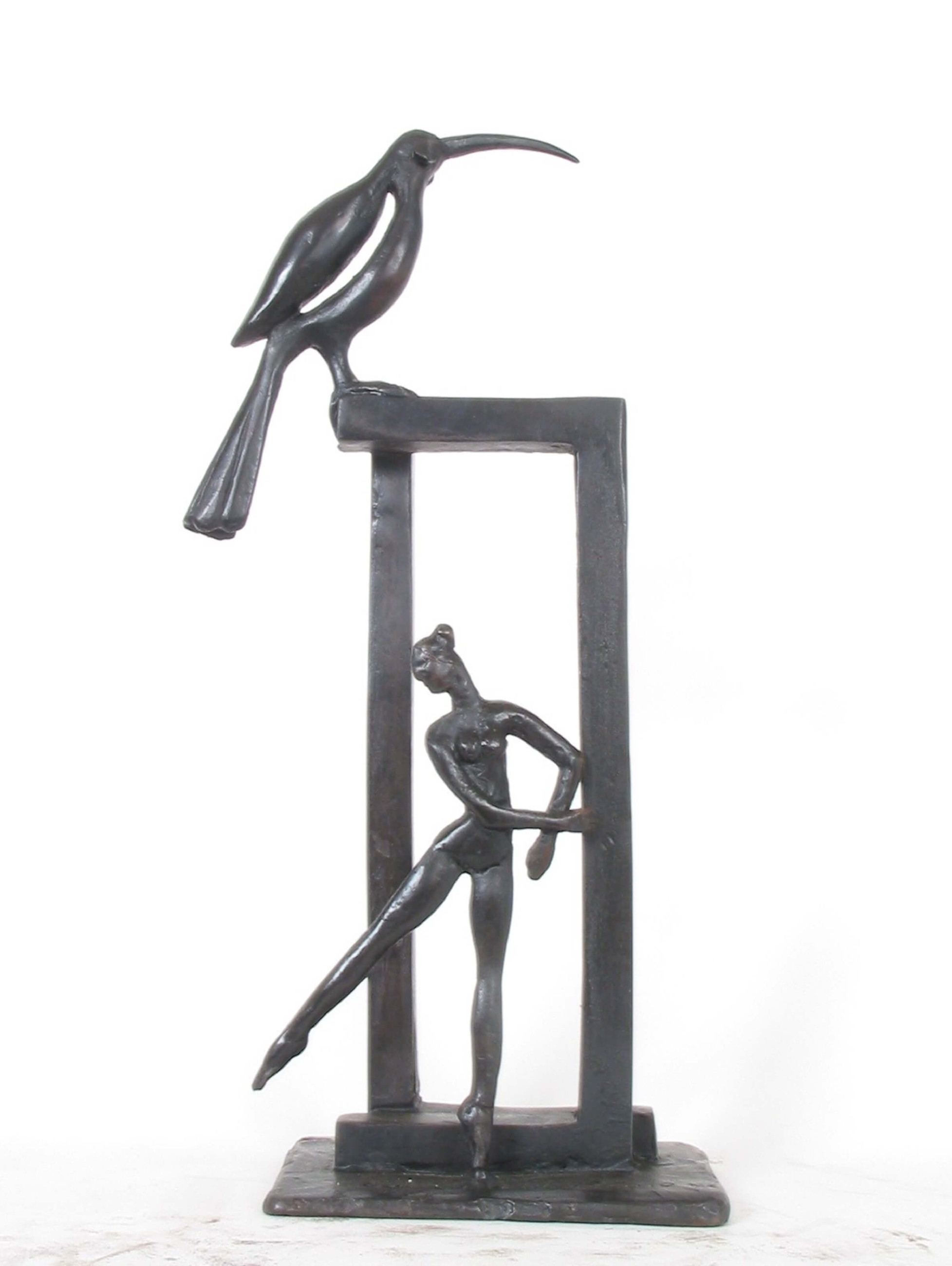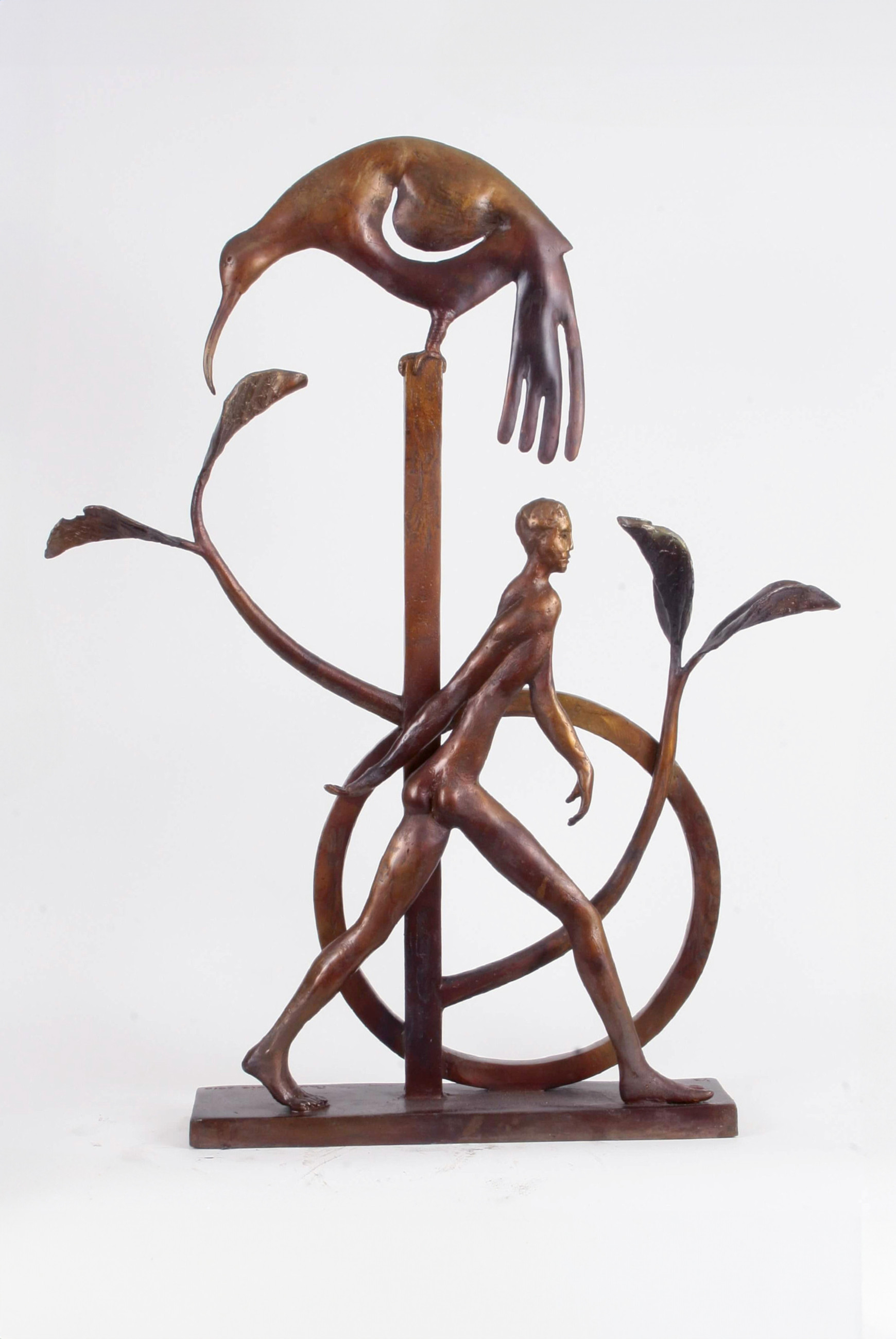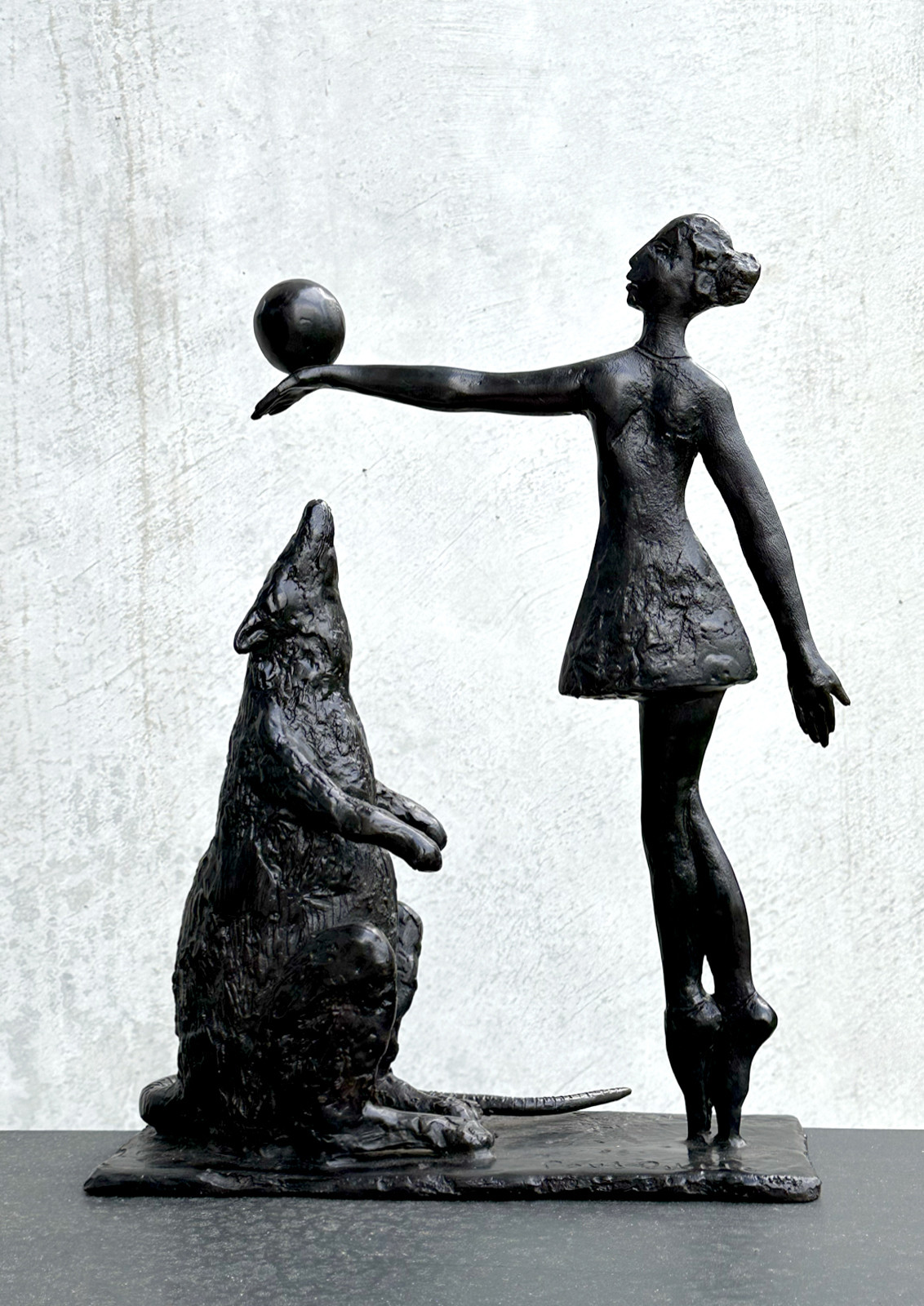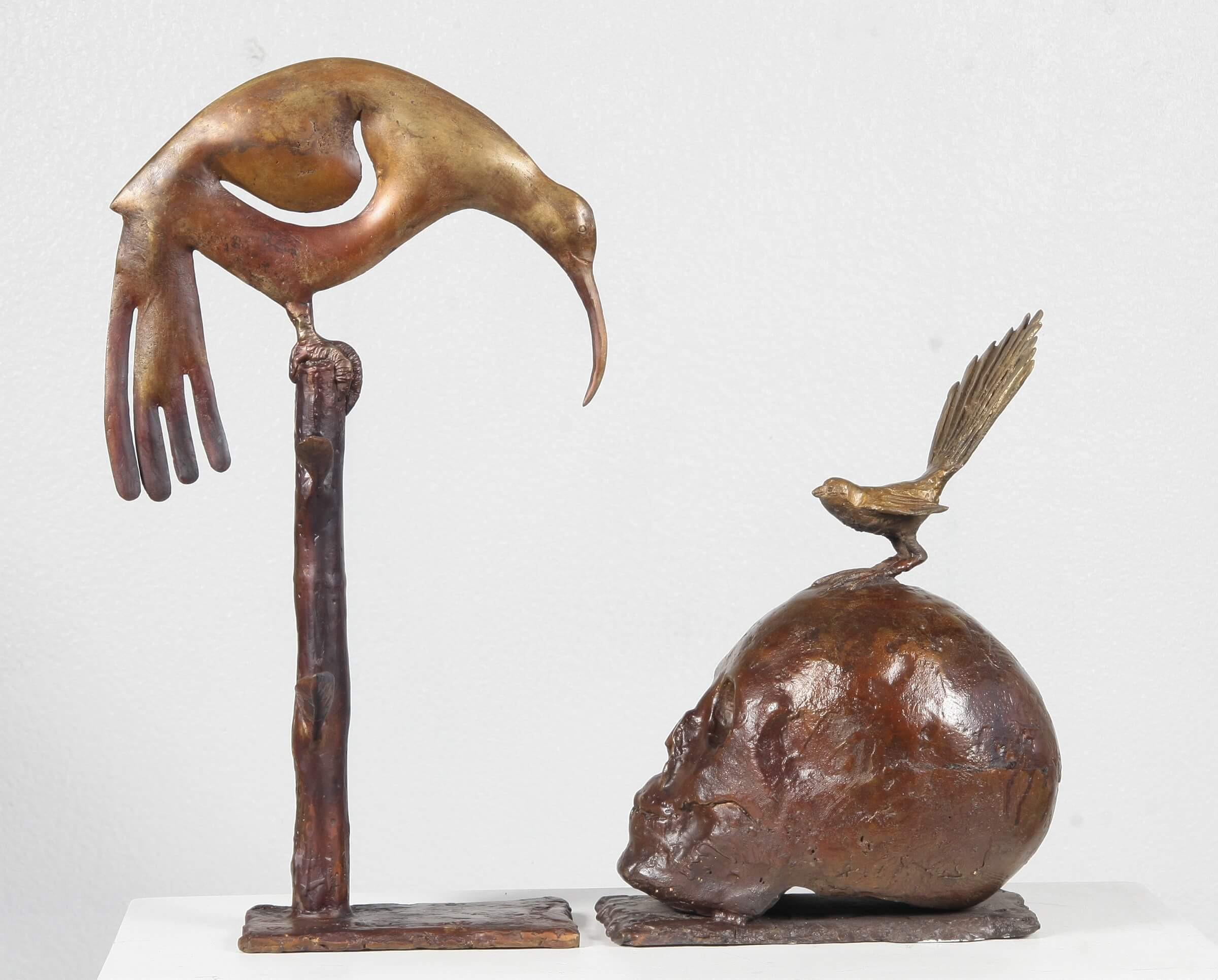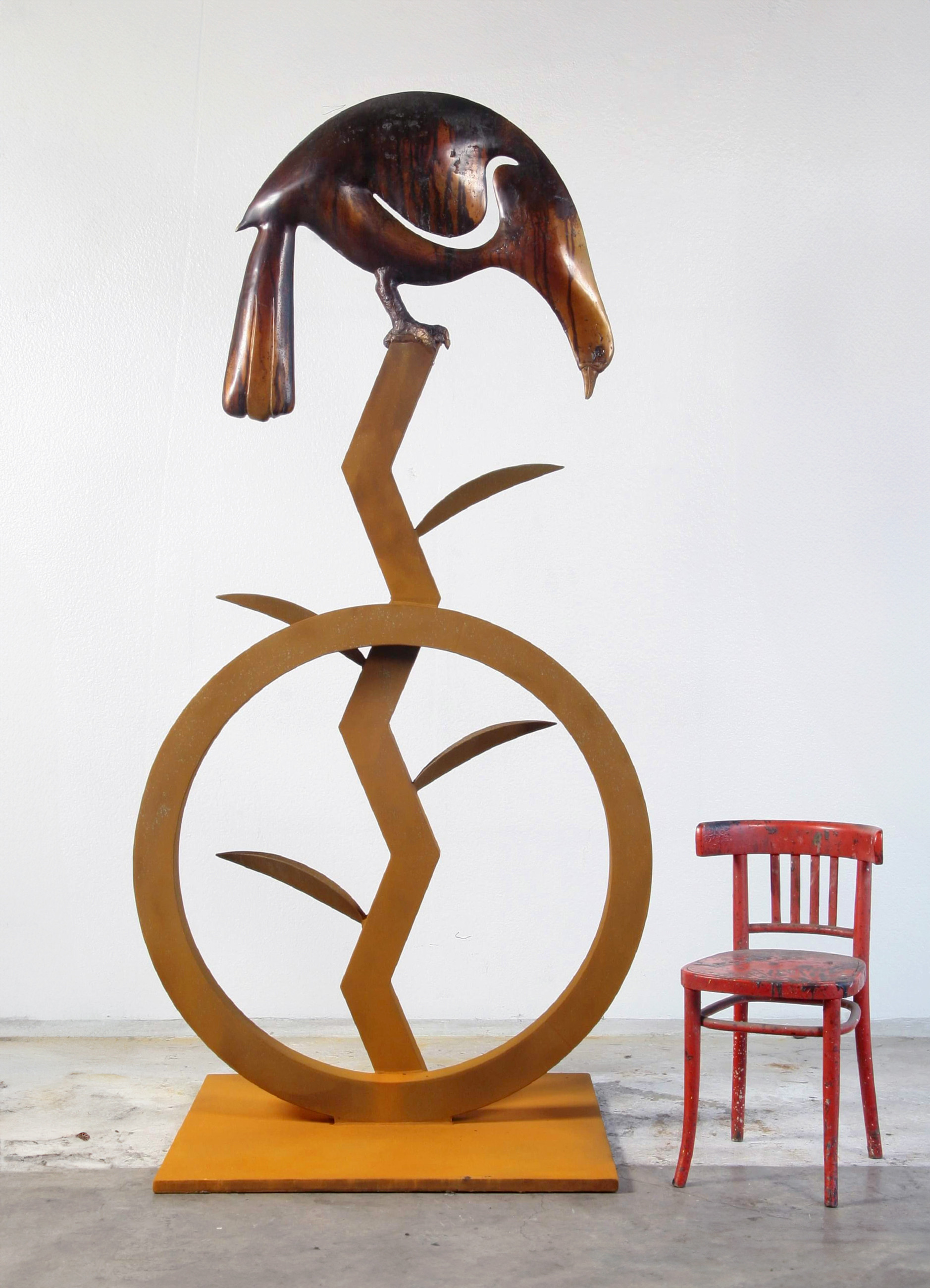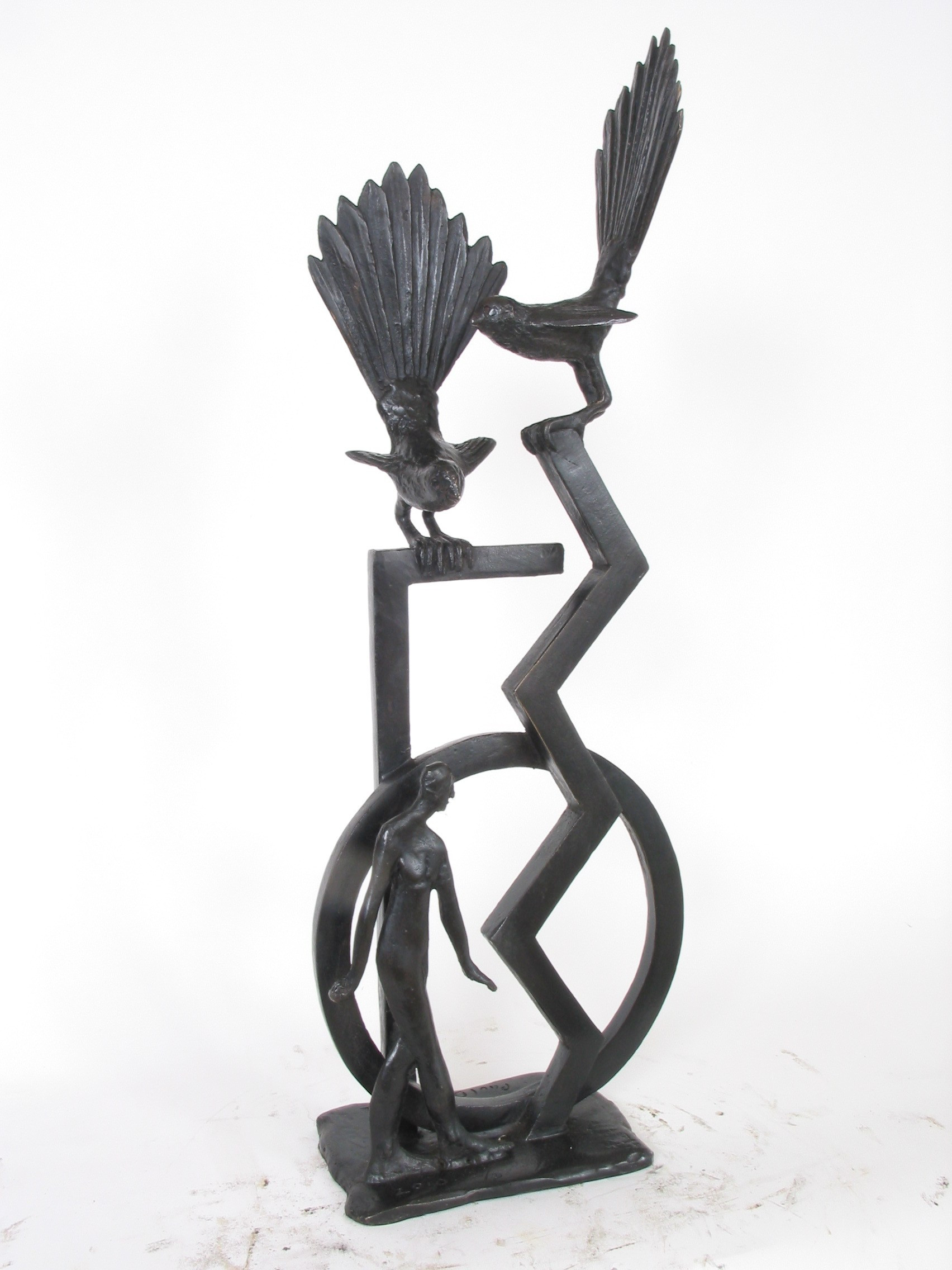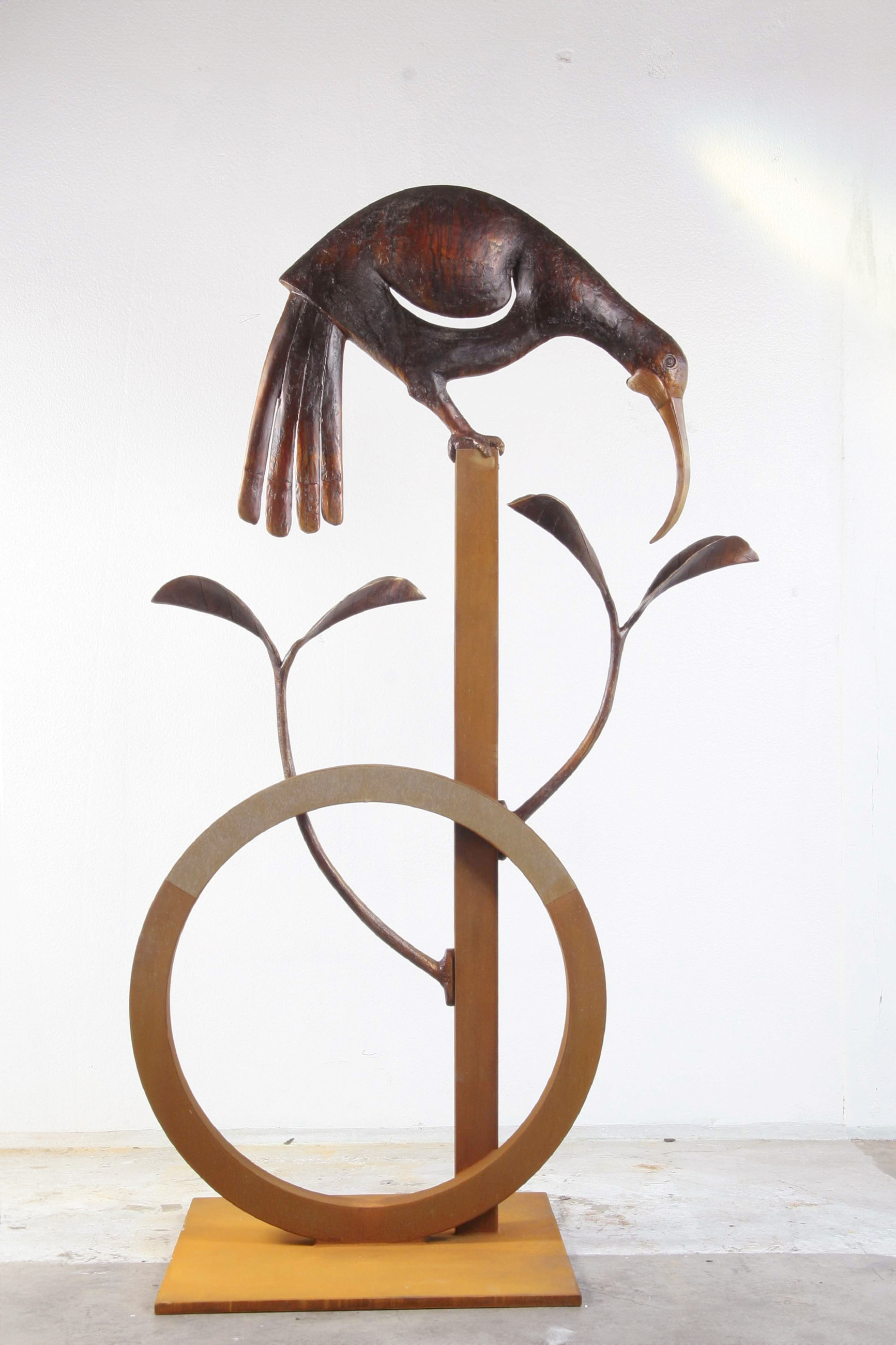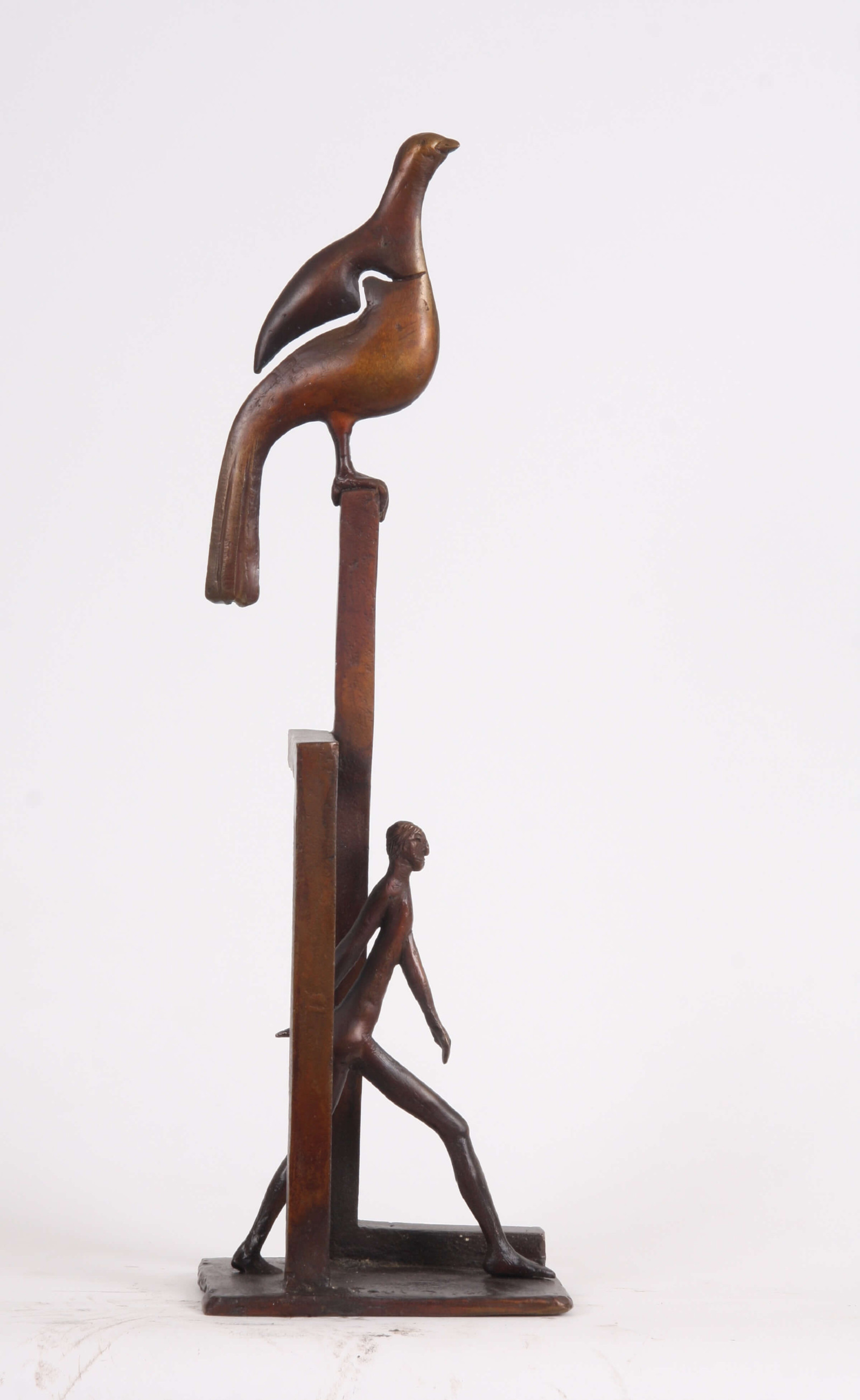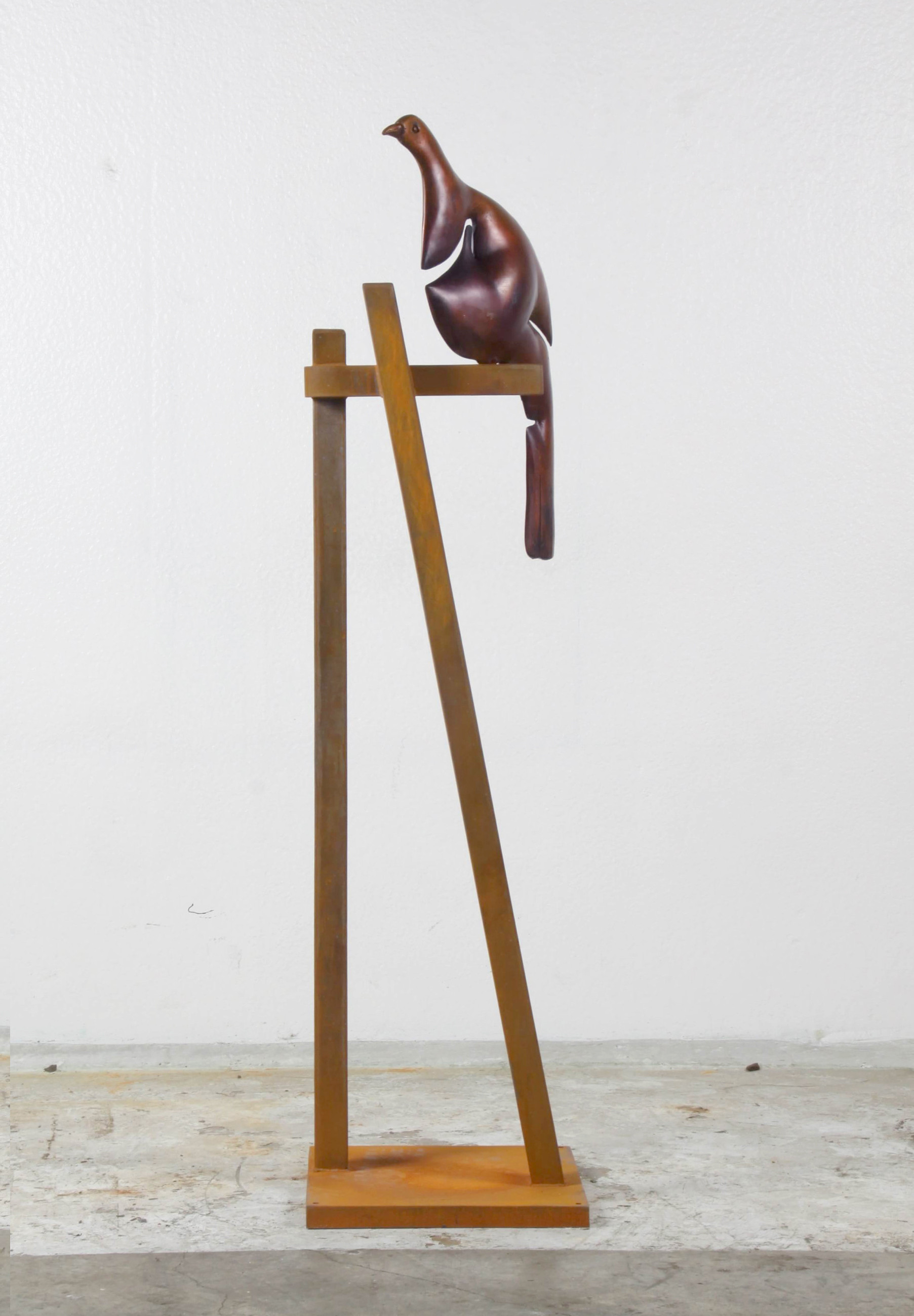October 6 - October 30, 2010 Birds' Eye View
October 6 - October 30, 2010 Birds' Eye ViewSolo, Gow Langsford Gallery, Auckland
Text
The world can be thought of as divided into two. The upper part is occupied by birds; in skies and forest canopies, who see the land laid out as topographical map. Below we move along with the rest of life, looking at what we see in front. On a walk in the bush we hear the songs of birds, but they are very hard to spot, often existing unseen in their own realm high above.
Paul Dibble’s birds, in this latest series of work, in the exhibition Birds’ Eye View at Gow Langsford Gallery in 2010, seem such stately and wise beings. They are giant creatures, though there is some mocking in these seemingly massive structures for although when viewed front on they are as large as monoliths from the side they become thin undulating lines belittling the suggestions of enormity.
Some of the birds are inquisitive, leaning down as if to try and pick up the detail of the scene below, some are balanced as still as the sphere that doesn’t roll off a straight perch (in Balancing the Bird). One bird drops from the sky in an elegant swoop, long tail feathers spread out behind, appearing as if just about to settle beside a branch where a kōwhai flowers. As caricatures they each display their own nuances – a woodpigeon sedentary and fat, the aggressive diving of the tūī and several ghosts of huia reminding us of earlier paradisal times.
Huia in particular Dibble has a fondness for; due to their obvious beauty – delicate red wattles, a long curving beak (these are females all of them, for the males have short stunted bills) and the fan-like spread of a tail. And poignantly due to their absence, immortalised forms in bronze they can be read as tributes. Huia in part refer to Dibble’s current residential location, the studio located in the industrial area of Palmerston North where the last huia soared, a few hills away, in the Tararuas in 1910.
The birds in the sculptures are held up on perches; minimal structured assemblages that they comfortably use as temporary rest spots while they gaze down. The stands are so obviously made by us, fashioned of circles, beams and ziggurat shapes, perhaps they are sculptures of their own accord, structures as could be made by someone such as Serra or Judd, international modernism relocated to the South Pacific. They have settled in and become part of the furniture, some are even starting to sprout leaves, for the birds have moved onto them as part of their environment.
In the large sculptures this scaffolding is made of Corten steel. The mix of Corten and bronze began for Dibble two short years ago, its combination is alchemy. Corten is the stuff from which you make shipping containers, as art the rust is elated to reverence next to the seductive surface of the bronze. Together they create a stylistic juxtaposition. The Corten is treated like manufacture, fabricated – cut, welded and constructed into squares and curled into perfect circles. Bronze is the sensuous, the historical emperor of sculpture material in art history, but more a metal formed into shape by such different process. The process of casting bronze means it can be made in the round. The artist can model, with clay and wood and wax, but not so much this, but through the use of hands, to make forms, to extend a bill into a long, elegant curve, or shape a filmy wattle. Thus, it is a more personalised vision that is revealed. Bronze also lends itself to surface treatment to produce coloured patina with expressive qualities. A drip of black can run down an edge, it can then be overlaid with rich ruddy red browns, solidified to dark charcoals and polished clean to golden hues. This against the foil of Corten’s flat rust emphasises it as even more flamboyant and humanistic.
Humans do make an appearance in some of the studies. In Parallel Worlds the oblivious walker is making pace striding while looking straight ahead. A lone huia looks on quizzically, barely hidden by large floppy leaves. Its vantage point allows a complete view, while on ground level the man continues to be bound to earth.
